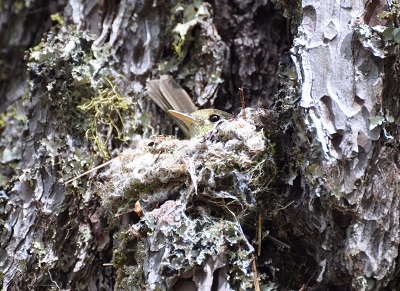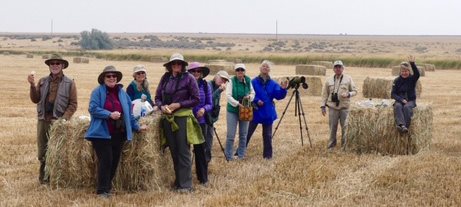Landbird Monitoring in the Klamath Network
 By Brandon Breen, Klamath Bird Observatory Science Communications and Outreach
By Brandon Breen, Klamath Bird Observatory Science Communications and Outreach
This article originally appeared in Klamath Kaleidoscope, the official newsletter of the Klamath Network Inventory & Monitoring Program.
Starting in 2008, Klamath Bird Observatory—in partnership with the National Park Service’s Klamath Network—has been carrying out landbird monitoring at six national park units in northern California and southern Oregon: Crater Lake National Park, Lassen Volcanic National Park, Lava Beds National Monument, Oregon Caves National Monument, Redwood National and State Parks, and Whiskeytown National Recreation Area. This year, we monitored landbirds at Crater Lake and Oregon Caves, thereby completing our second round of visits to all park units.
Landbird monitoring is an essential part of the Klamath Network’s Inventory and Monitoring Program. Landbirds are particularly useful indicators of ecosystem health. Landbirds vocalize their presence through song and many species can be monitored in a cost-effective way using a single monitoring protocol. Also, landbirds are diverse and an ecosystem must contain a large number of specific habitat components (e.g., dead snags for cavity nesting) in order to support a varied bird community. When ecosystem health deteriorates some of these habitat components disappear, and some bird species  along with them. Thus, landbird monitoring provides a critical window into the vital signs of an ecosystem. The ultimate goal of this long-term monitoring program is to generate information and understanding that will enable the National Park Service to preserve its natural resources.
along with them. Thus, landbird monitoring provides a critical window into the vital signs of an ecosystem. The ultimate goal of this long-term monitoring program is to generate information and understanding that will enable the National Park Service to preserve its natural resources.
We apply two different methodologies to landbird monitoring: breeding season point count surveys are used in all park units, and bird banding is employed at Oregon Caves. In 2013, we completed two scientific reports that in combination provide a picture of the abundance of landbird species as well as the habitat relationships of individual species in the five large park units (not including Oregon Caves). These two reports establish the foundation from which future analyses will build. You can access the two reports by clicking their titles here: Estimating bird density and detection probability at five national park units in southern Oregon and northern California, and Bird-habitat associations at five national park units in southern Oregon and northern California.
 Donate
Donate
Advancing bird & habitat conservation through science, education, and partnerships